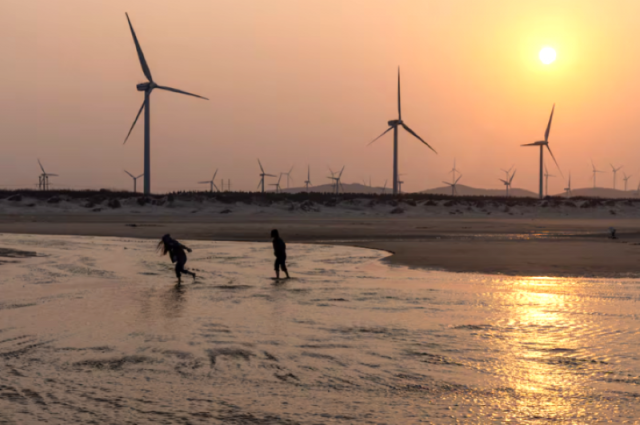China adds wind, solar power equal to five nuclear plants weekly
China is installing at least 10 gigawatts of wind and solar generation capacity every fortnight

A report by Sydney-based think tank Climate Energy Finance (CEF) said China was installing renewables so rapidly it would meet its end-of-2030 target by the end of this month — or 6.5 years early.
It's installing at least 10 gigawatts of wind and solar generation capacity every fortnight.
By comparison, experts have said the Coalition's plan to build seven nuclear power plants would add fewer than 10GW of generation capacity to the grid sometime after 2035.
Energy experts are looking to China, the world's largest emitter, once seen as a climate villain, for lessons on how to go green, fast.
China accounts for about a third of the world's greenhouse gas emissions. A recent drop in emissions (the first since relaxing COVID-19 restrictions), combined with the decarbonisation of the power grid, may mean the country's emissions have peaked.
"With the power sector going green, emissions are set to plateau and then progressively fall towards 2030 and beyond," CEF China energy policy analyst Xuyang Dong said.
So how is China building and connecting panels so fast, and what's the role of nuclear in its transition?
China accounts for about a third of the world's greenhouse gas emissions. A recent drop in emissions (the first since relaxing COVID-19 restrictions), combined with the decarbonisation of the power grid, may mean the country's emissions have peaked.
Read: Most of wind, solar plants being built in China
"With the power sector going green, emissions are set to plateau and then progressively fall towards 2030 and beyond," CEF China energy policy analyst Xuyang Dong said.
China is building 339 gigawatts (GW) of utility-scale wind and solar, or 64% of the global total, a report from U.S.-based think tank Global Energy Monitor (GEM) found. That is more than eight times the project pipeline of the second-place US, with 40 GW.
Data from China's National Bureau of Statistics showed a 29% increase, but that excluded rooftop solar panels and therefore missed about half of the electricity from solar.
The new analysis calculated wind and solar output using power generating capacity data and utilisation figures from the China Electricity Council, an industry association.
Wind power generation rose 5% on the year to 83 TWh as a 21% increase in capacity was offset by lower utilisation because of variations in wind conditions. Hydropower generation rose 39% from last year, when hydropower was hit by a drought.
Gas-fired generation fell 16%, and power generation from coal fell 3.7%, even as total electricity demand increased 7.2% year-on-year.



















COMMENTS
Comments are moderated and generally will be posted if they are on-topic and not abusive.
For more information, please see our Comments FAQ